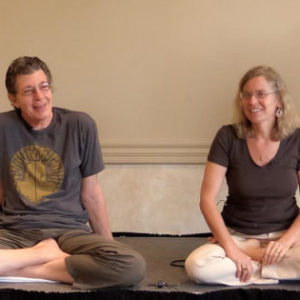ONLINE COURSE CO-TAUGHT BY DR. CLAUDIA WELCH AND DR. ROBERT SVOBODA
Welcome! We’re glad you are here.
Lifespan, complexion, strength, health, enthusiasm, plumpness, luster, ojas, tejas, [other types of] agnis and prāṇa all depend on the body’s [jaṭhara] agni. Extinction of jaṭhara agni leads to death; its proper maintenance helps a person to live a long life, and its impairment gives rise to diseases. Therefore jaṭhara agni is considered to be the foundation of living beings. Caraka Saṃhitā: Cikitsāsthāna: XV:3-4
Agni is one of the most important factors in health. It is present throughout the body and, just as light appears in varied colors when shown through a prism, the functions of agni express differently depending on its location. We saw this idea, for example, when we studied vāta in Lesson 5 of Foundations of Āyurveda Part I. We saw that, though there is one vāta, it manifests differently depending upon where in the body or mind it is functioning, and we may ascribe it different names in those various locations. It is similar in the case of agni. In this 5-hour lesson, we continue our exploration of agni and its various roles and positions in Āyurvedic physiology.
Of particular interest to students already familiar with the learning objectives of this lesson, might be the insights around the bhūta agnis –especially the discussion around the curious and fascinating aspects of the liver. It is curious how little description or emphasis is placed on the organs in the classics of Āyurveda. The organs are generally discussed in the context of the srotāṃsi (in Lesson 4 of Foundations of Āyurveda Part II) but the liver can figure prominently in a conversation about bhūta agnis–and does in this lesson.
Regarding this particular course, you should know it is one excerpted lesson of our Foundations of Āyurveda Part II course. We are offering each lesson of that course as a stand-alone lesson–like this one–so that people can explore just one topic of interest but, if it seems a little out of context standing alone, it is because it is indeed out of context. But we feel the information presented will be valuable nonetheless.
If you would like more information on this course than what you’ll find on this page, whether it is approved for NAMA credits, etc., kindly peruse the home page–including the FAQs– for Foundations of Āyurveda Part II.
Textbooks: Dr. Vasant Lad’s Textbook of Ayurveda, Volume 1: Fundamental Principles of Ayurveda and Textbook of Ayurveda, Volume 2, A Complete Guide to Clinical Assessment, You can go through this course without either text, relying only on our lectures and handouts, but throughout our lessons we recommended readings from one or the other of these books, to enhance the information.




Reviews
There are no reviews yet.